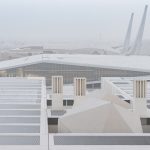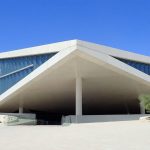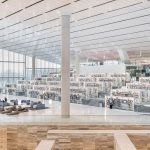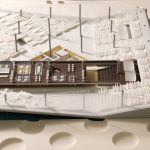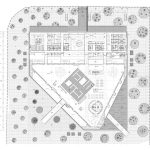Qatar National Library (QNL) building was designed and built by architect Rem Koolhaas and his subsidiary Office for Metropolitan Architecture (OMA). The library is located in Doha, Qatar. It is in an ideal location for students, as it is located in the Education City, which is an academic campus. Qatar National Library which was officially opened in April 2018, houses the national library with old Arabic manuscripts, the public library with space for children, and the academic library that supports research. The library houses the national library with old Arabic manuscripts and more than a million books, a public library with an area for children, and an academic library that supports research. The purpose of establishing the Qatar National Library is to produce an information center in Qatar, thus encouraging people to book culture and reading habits and to eliminate the lack of a central library.
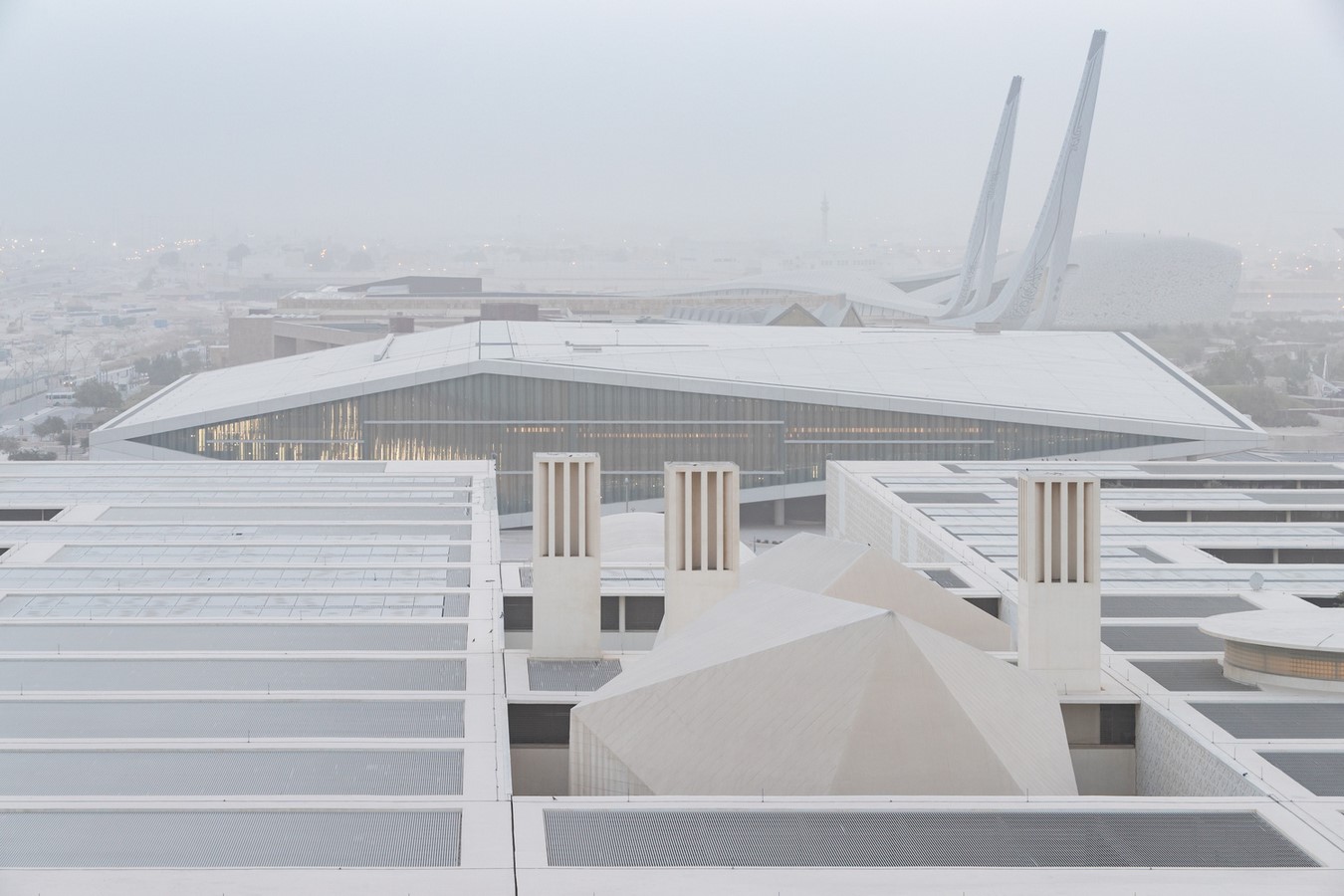
The building attracts attention primarily with its interesting shape. The building looks like two papers “that are pulled apart and folded diagonally at the corners to create a shell-like container, which encloses the open-plan interior” (QNL 2018). However, for those who follow Rem Koolhaas’s work, this should not be unusual, because OMA’s previous works also have such different shapes.
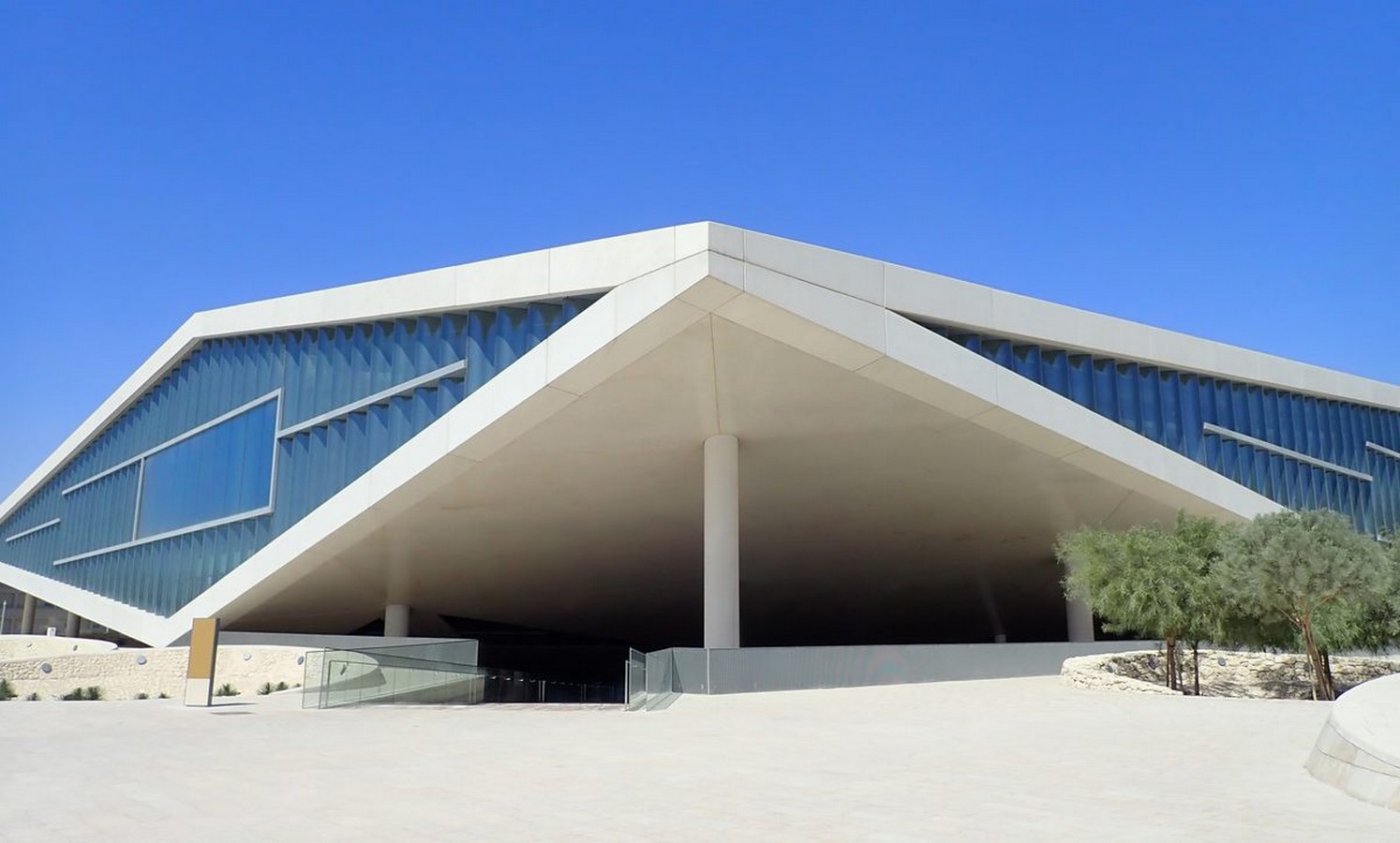
When you enter the library, you find yourself directly in the center and a wide area of 45,000 square meters welcomes you. Instead of a multi-storey building with an almost labyrinthine mess, a whole space is designed in spaciousness. The entire library consists of a monolithic space rather than partitioned spaces and this space encirclements you with books. Contains over a million books, periodicals, and other items. The bookshelves are in a stepped area and have the appearance of an amphitheater. “We designed the space so you can see all the books in a panorama,” said OMA co-founder Rem Koolhaas. The zig-zag ramps are designed to allow access, as the terraces where the books are located create a slope with their rising levels.
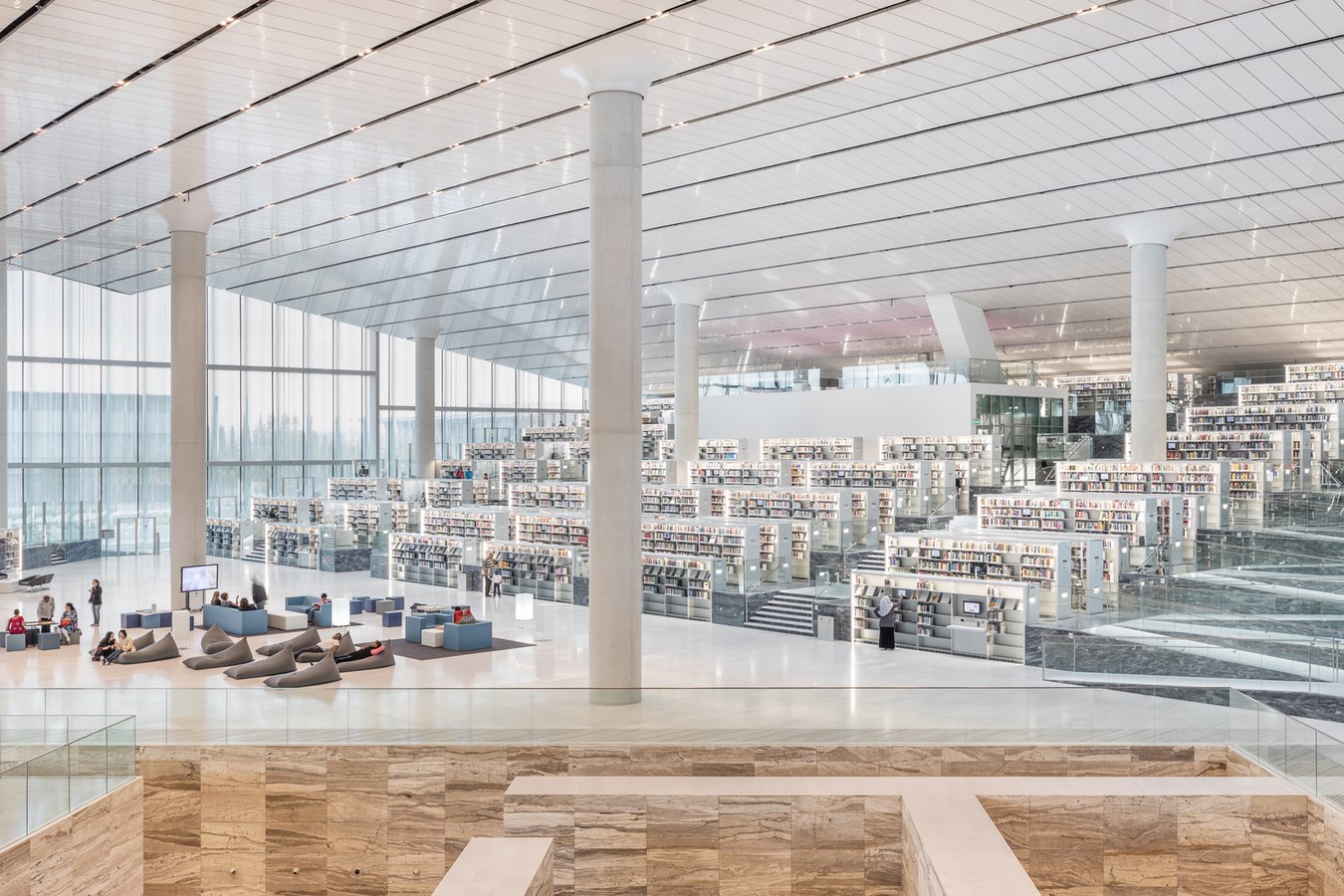
In order to connect the main corridors of the library, there is a 25-meter wide bridge that works like a mezzanine floor. While on the bridge, you can use the media and study rooms, exhibition displays, a circular conference table, reading desks, and see the heritage library, central space, and auditorium. The auditorium, located in the part of the building that rests on the ground, is located at the end of the bridge and merges with the bridge. The heritage library, on the other hand, is 6 meters deep at the negative elevation, as if there was an archaeological excavation. The Heritage Library can be observed from the ground floor. ‘’The heart of Qatar National Library, the Heritage Library, is a unique contribution to Qatar’s cultural landscape. Its growing collection includes rare and valuable archival documents, books, and periodicals in various European languages; early Arabic printed materials, such as books, journals, magazines, and newspapers; and Arabic manuscripts, maps, atlases, globes, historical photographs, and instruments and tools related to travel.’’ (QNL)
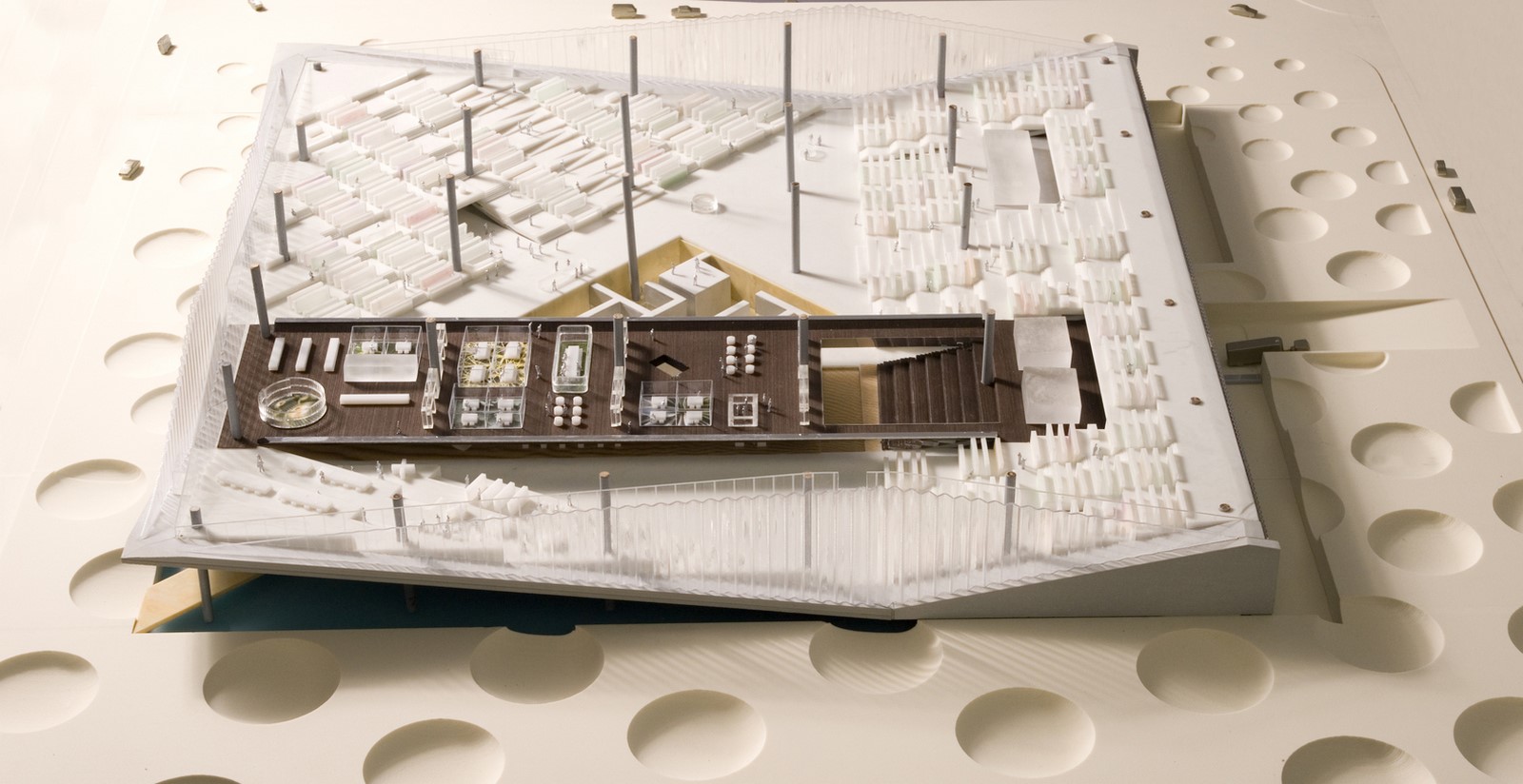
Ancillary functions such as offices, computer labs, instruction rooms, study rooms, warehouse, children’s library, and personnel areas are also included. A look at the innovative technologies integrated into the building reveals automated self-check and return stations and a Radio Frequency Identification (RFI) book sorting system. It is available in computer systems, tablets, interactive screens, and audio-visual equipment for visitors to spend quality time, book returns, or students’ research.
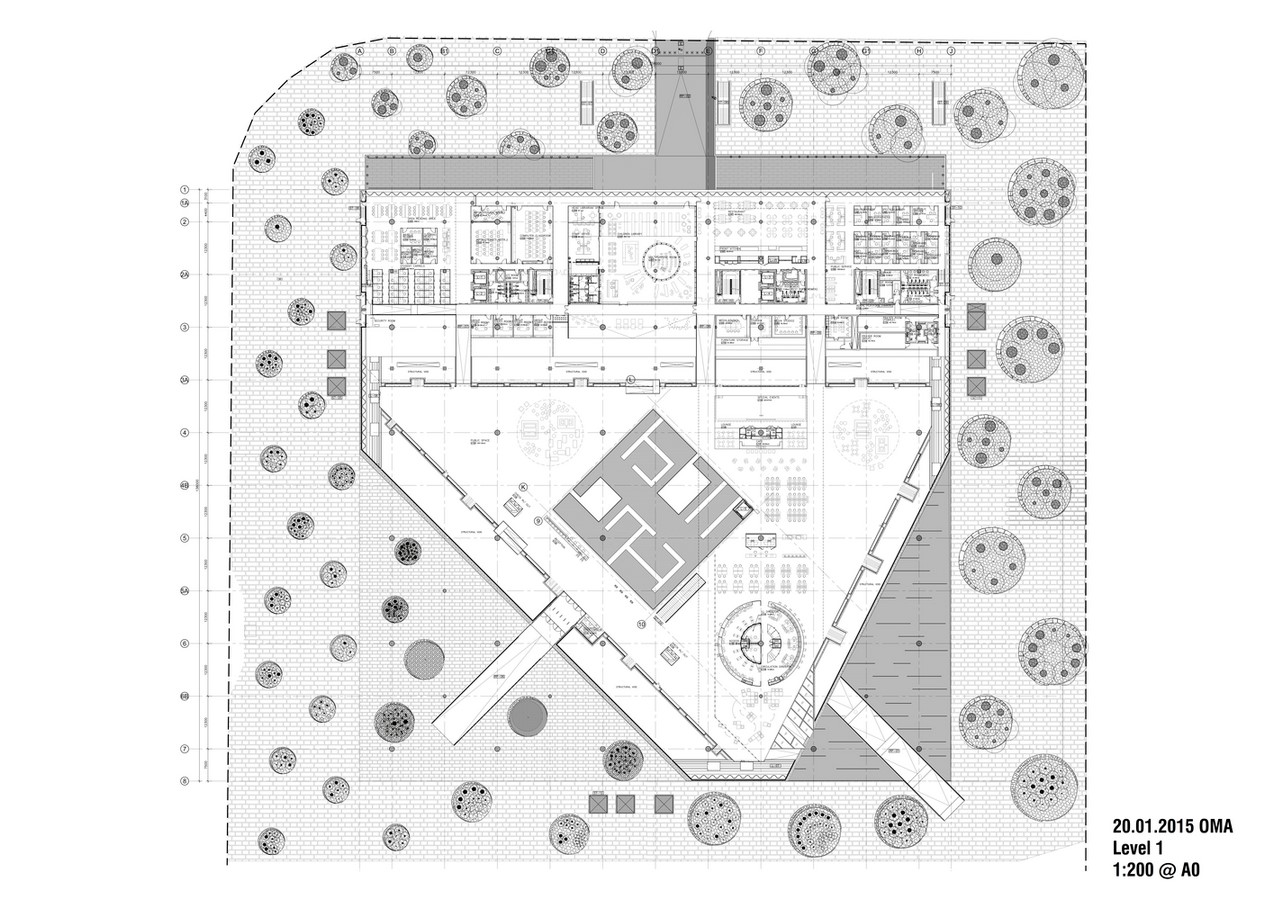
When looking at the exterior of the Qatar National Library, the corrugated glass facade is the first thing that attracts attention. OMA also preferred this type of glass in the Casa da Musica in Porto and Taipei Performing Arts Center. For the Qatar National Library with its lozenge-shaped façades, this corrugated glass was chosen for climatic reasons, as this type of glass can keep the heat out during the extremely hot days of the desert. In addition, since aluminum is used as the ceiling material, the light reflected from the corrugated glass creates a bright environment inside. Looking at the materials used other than aluminum, marble, a traditional material, was used in the part of the heritage library. On the floor, a color change was made and white marble was chosen instead of beige. While travertine is preferred on the terrace, stainless steel, one of the contemporary materials, is used in the building from time to time.

‘’Libraries are important knowledge hubs of knowledge-based societies because they are the traditional institutions of knowledge management. Besides print publications, libraries need to provide sufficient digital material and attractive physical infrastructure for their users’’ (Mainka et al., 2013). The Qatar National Library, designed by OMA’s co-founder Rem Koolhaas, is a unique cultural building, with its striking shape, unusual library interior planning, and bringing together the past and the future through materials.
References:
- QNL,(2018). The Building. Doha, QA: Qatar National Library.
- QNL. About the Library/ Our Building. [online]. Available at: https://www.qnl.qa/en/about/the-library-building [Accessed 28 January 2022].
- Mainka, A., Hartmann, S., Orszullok, L., Peters, I., Stallmann, A., and Stock, W. G. (2013). Public libraries in the knowledge society: Core services of libraries in informational world cities. Libri, 63 (4), 295-319



